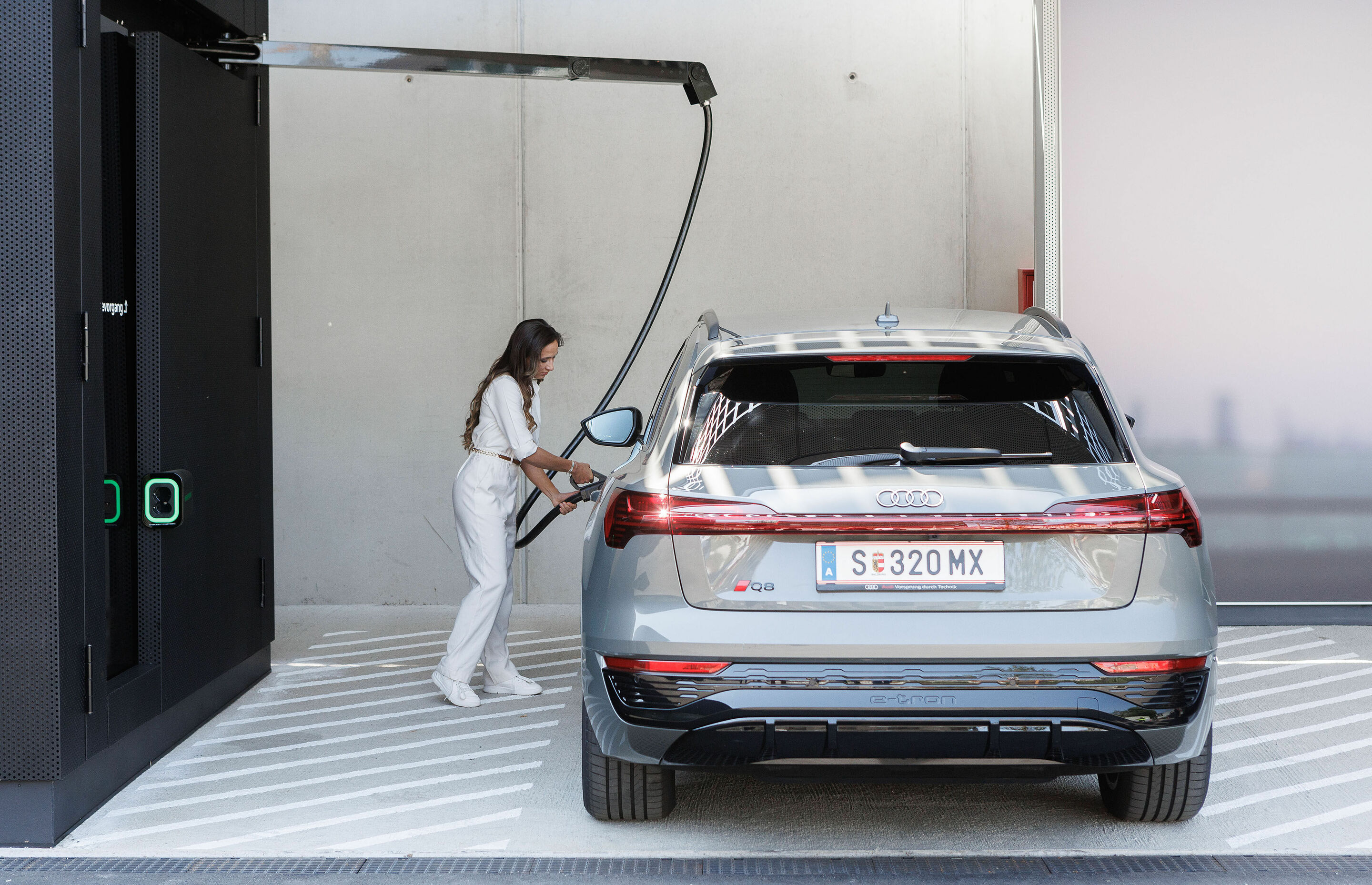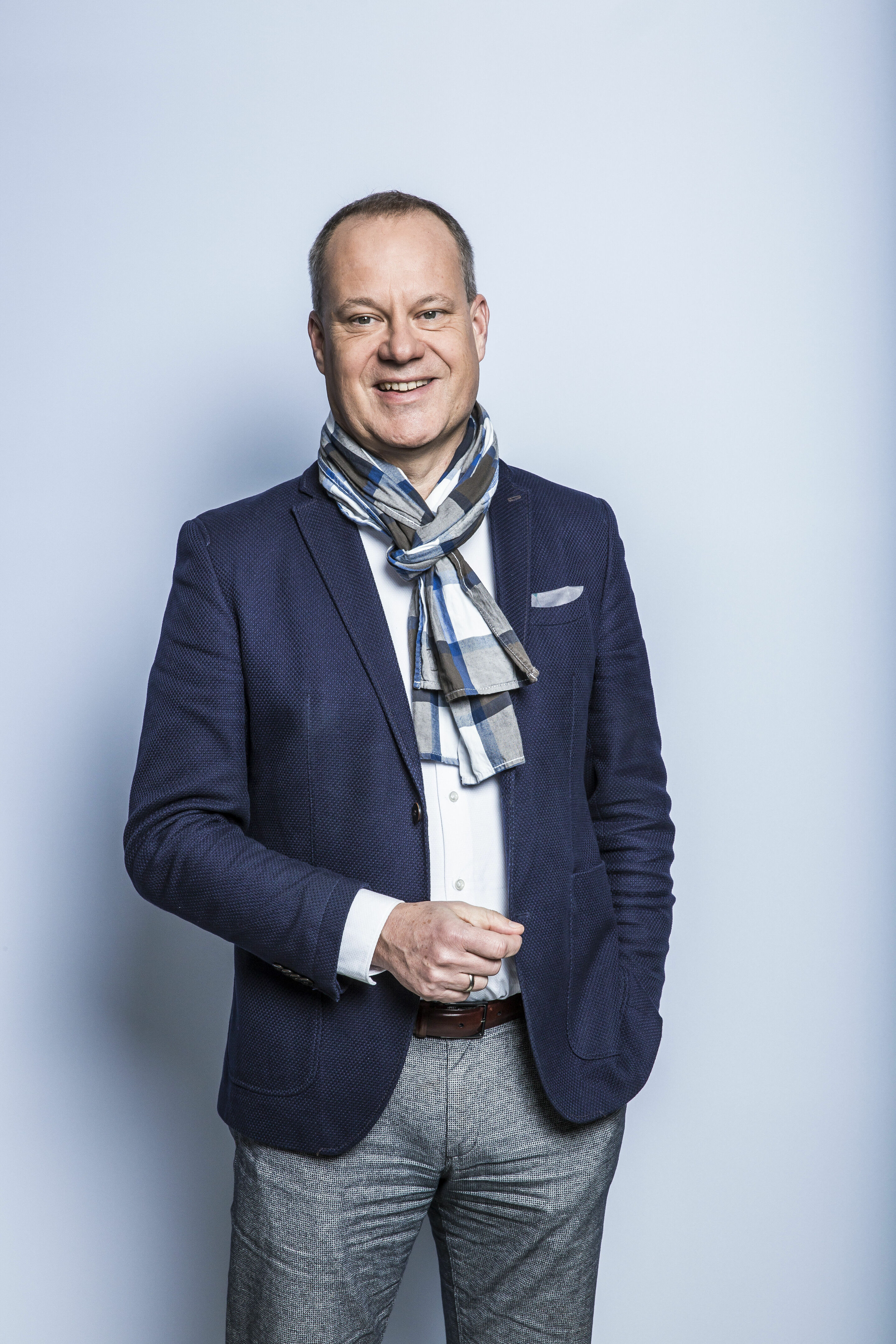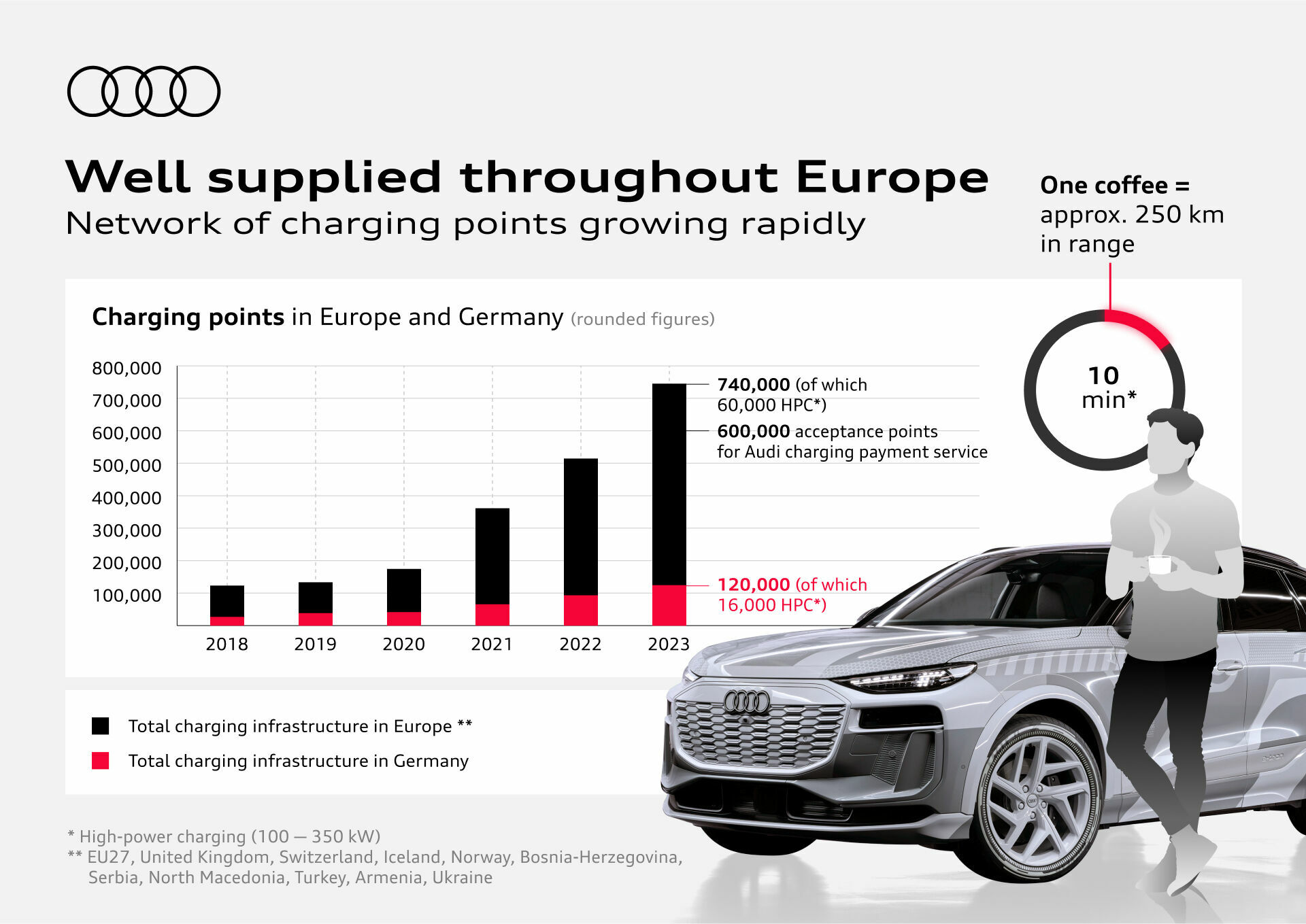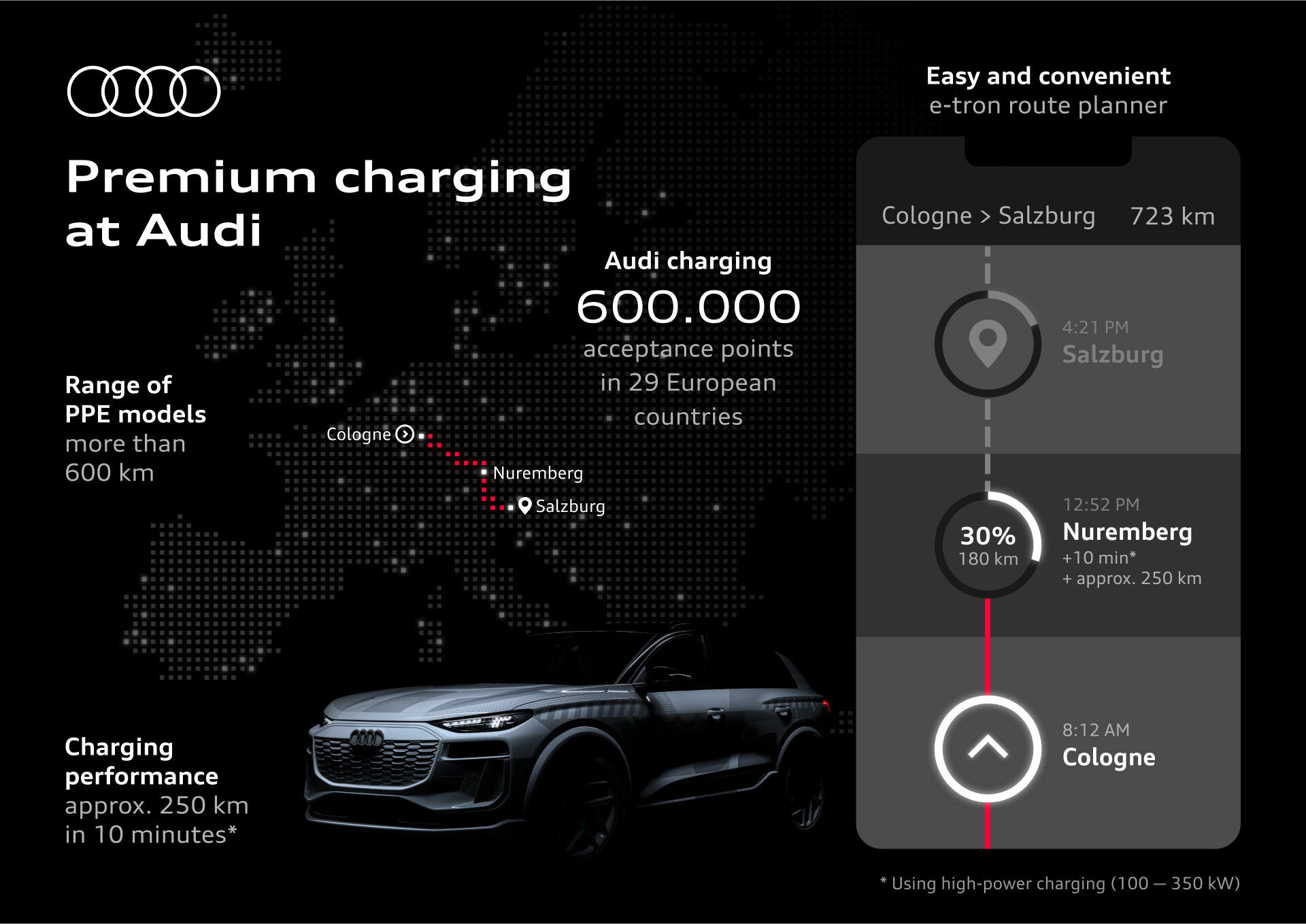Jens van Eikels: “To me, premium charging means easy, quick charging in a pleasant environment”
Charging should be an effortless and relaxed aspect of owning an electric car – owners should not have to compare prices or be tied to charging stations from a particular provider every time they charge. Jens van Eikels, Head of the Charging Project House at AUDI AG, a central hub for all issues relating to charging, infrastructure, and technology understands what electric car drivers want and expect. In this interview, Eikels gives expert insight into how Audi plans to make the charging process, and its various charging and service offerings, even more simple for users.
Why is Audi focusing so intensively on the topic of charging?
Jens van Eikels: Put simply, the success of e-mobility will depend on three factors. First, of course, the cars have to be enticing. This applies above all to their quality and charging performance, which is very important to us at Audi. It is important to us that the charging curve of our electric models remains at a high level over a long period of time. This means that the cars charge a lot for a long time. Another important factor is connectivity, specifically the connection between a smartphone and the vehicle, so that drivers can reliably plan charging stops along the route, and if need be, air-condition the vehicle prior to use. The third important pillar is charging and service offerings. We distinguish between charging at home and charging on the road, with a focus on long-distance mobility with the option to charge conveniently at home and abroad, including quick charging in urban centers – essential for drivers who don’t have access to a charging facility at home or at work. At the Charging Project House, we are working on all charging scenarios to develop convenient solutions for all of our customers.
How does Audi plan to transform charging from a necessity into a premium experience?
Van Eikels: It is important that we have an adequate range of services for all charging needs; this commitment is the basis for a positive charging experience. To me, premium charging means easy, quick charging in a pleasant environment – our Audi charging hubs already cover all of these bases, including Plug and Charge functionality. At compatible charging stations, the vehicle automatically authorizes and activates the station when the charging cable is plugged in, facilitating automatic billing. We also use cable holder systems in all of our charging hubs, for both an ergonomic design and additional convenience, whilst accessible charging plugs, and large informative displays round off the positive charging experience. The Audi charging hub in Nuremberg features a comfortable waiting lounge, while other locations are situated in lively urban areas with high-quality restaurants or shopping facilities. From 2024, a new solution will mean that customers who do not yet have an Audi charging hub nearby will also be able to use their charging time sensibly and according to their personal needs.
What do customers want from charging and what is still their biggest criticism?
Van Eikels: The traditional criticism around lack of charging facilities is far less common now, especially in this country with the current ratio of charging infrastructure to registered EVs being more well balanced. However, we also know that ranges suitable for everyday use with short charging stops is a decisive step towards wider acceptance of e-mobility. Audi is therefore focusing on these two factors as we continue to develop electric vehicles, with short charging stops being made possible by impressive charging performance. The new vehicles on the Premium Platform Electric will in future only need a 10-minute charge at an HPC charging station to drive around 250 kilometers with the battery charging from ten to 80 percent in just over 20 minutes.
How does Audi differentiate itself from the competition when it comes to charging?
Van Eikels: With our urban Audi charging hub concept, Audi was one of the first to offer customers a high-power charging (HPC) experience that is completely focused on convenient charging. In China, our branded charging stations, which are growing rapidly in number, are the cornerstone of a premium ecosystem. The charging points, which are in attractive locations and offer reservation and Plug and Charge functionality, represent a future-oriented infrastructure that meets the growing demand for charging, especially in large cities. With strong partners such as Electrify America in the USA, IONITY in Europe, and CAMS in China, the Volkswagen Group has stakes in very powerful quick-charging networks. In Germany, we also work with partner companies such as Elli – a Volkswagen Group brand for energy and charging solutions. Our network of selected partners means we can rely on IONITY, Aral pulse, and Ewiva for our customers in the public sector. These names stand for high-quality HPC charging in combination with the attractive rates of our Audi charging service. And when it comes to charging at home, we offer maximum flexibility with our modular e-tron charging system compact and our optional charging system connect, which even allows cost- and PV-optimized charging.
Are there any gaps left for Audi to close?
Van Eikels: We will only be satisfied when our planned future developments for a smooth and error-free charging experience for all customers, becomes a reality, including seamless integration between the vehicle, navigation system, and charging infrastructure. This will be a key factor in ensuring that everyone can recognize the benefits of electromobility.
How have customers responded to the new Audi charging system?
Van Eikels: We are very pleased with the number of contracts signed and the extent to which our customers use Audi charging with its broad coverage and simple electricity plans. This means we have a highly competitive and consistent pricing environment across Europe with roughly 5,000 new customers added every month. From the beginning of the year, Audi customers have charged more than 17 million kWh (as of 12/13/2023) – an impressive 85% of that was in quick-charging networks. Many of our customers continue using Audi charging even after that first year when Audi covers the maintenance fee, indicating we have struck a chord with our customers. There are now around 600,000 charging points in 29 countries in Europe, with the Audi charging hub in Nuremberg proving most popular with our EU drivers – a resounding confirmation that our strategy of focusing on premium HPC charging networks is working.
What role does charging play for employees? And what measures is Audi taking at its own locations?
Van Eikels: Charging at the workplace is crucial for everyone who has no means of charging at home or in their vehicle’s immediate vicinity for daily use. Reliable alternatives are particularly important for employees who fit this description, which is why it was important for Audi to electrify more than five percent of our employees’ parking spaces.
How has the charging infrastructure developed in general over the past year?
Van Eikels: The development of the public charging infrastructure has sped up significantly in almost all regions of the world in recent years; there are currently more than 740,000 charging points in Europe, which means the number has almost doubled since the end of 2021. However, there are still significant regional differences. Germany will have more than 120,000 charging points by 2023 – compared to the current number of around 1.3 million all-electric vehicles in Germany, this is a good figure. In order to maintain this ratio as the number of vehicles increases in the future, more will need to be done to expand the charging infrastructure. We are also seeing disproportionate development in terms of the HPC quick-charging infrastructure – it has grown by a factor of 4.5 in Germany whereas across Europe, it has grown by a factor as high as 6.8 since the end of 2021.
What are the markets where Audi is setting charging standards?
Van Eikels: The high-volume markets of China, the USA, and Europe are of course top priorities for Audi. But we are also looking at countries like Brazil, India, and South Africa. We were the first to offer a quick-charging infrastructure via our dealership network but the transition to e-mobility is not just taking place in the major markets. When tackling international projects, we mainly rely on our importer and dealership structures as we want our customers all over the world to be able to enjoy the benefits of our vehicles, which are capable of charging very quickly. This requires a corresponding HPC infrastructure, so it is our intention to accelerate the development of such in markets around the world.
How much storage capacity can Audi offer using second-life batteries?
Van Eikels: Battery storage systems using second-life modules to support the energy needs of the charging infrastructure are now being deployed in many places – their use in the Audi charging hubs is well documented. But the internal charging infrastructure in Neckarsulm, for example, is also supported by three 525 kWh battery cubes, and we operate five mobile charging cubes and two large-sized container solutions with batteries from our end-of-life vehicles to take electricity to wherever it is needed. We typically use these mobile solutions for events, such as the World Economic Forum in Davos or on weekends at ski resorts in Norway. As the cubes are almost always fully booked, we are considering expanding the range as solutions like these allow us to make variable and grid-friendly use of power.
What role does green power play for Audi? Which projects does Audi support? And what partnerships is the company involved in?
Van Eikels: Since the launch of the Audi e-tron in 2019, we have been offering our customers in Germany green electricity contracts through our group partner VW-Naturstrom. A solar park in the German state of Mecklenburg-Vorpommern with 420,000 solar modules, is the first project to expand the supply of green power in Germany; Audi has partnered with the German utility company RWE for this undertaking. It is very important for Audi that electric cars charge with green power.
What does Audi see as the future topics when it comes to charging?
Van Eikels: Many view bi-directional charging as a future hot topic – and so do we; our teams are already testing bidirectional charging with larger battery storage systems. Like the Audi charging hub, the multi-use storage system on Berlin’s EUREF Campus, with its capacity of 1.9 MWh, uses second-life lithium-ion batteries from Audi development vehicles. The site acts as a real-world laboratory by testing various interaction scenarios between electric cars and the energy grid. But there is a lot more that makes driving an electric Audi even more attractive, for instance it’s already possible for customers to harness their own photovoltaic power in combination with the charging system, to power their vehicle with energy they have generated themselves. Of course, we are also looking at other topics relating to charging in the future. These include the optional offer of dynamic electricity plans in Germany from 2025.
| Short biography |
|---|
| Jens van Eikels was born in Homberg, Germany, in 1971 and trained as an industrial mechanic. After studying mechanical engineering at the University of Kassel and writing his thesis at Daimler Benz, he began his career at Audi in Quality Assurance in 1998. After holding various positions in QA, van Eikels assumed several management positions. In 2010, Jens van Eikels acted as Overall Project Manager for the Audi A3 e-tron, the brand’s first plug-in hybrid. He then contributed his experience and pioneering role in electrification as Head of the first all-electric model, the Audi e-tron, and as Head of the e-tron model series. Since 2021, Jens van Eikels has been Head of the Charging Project House at AUDI AG. |



